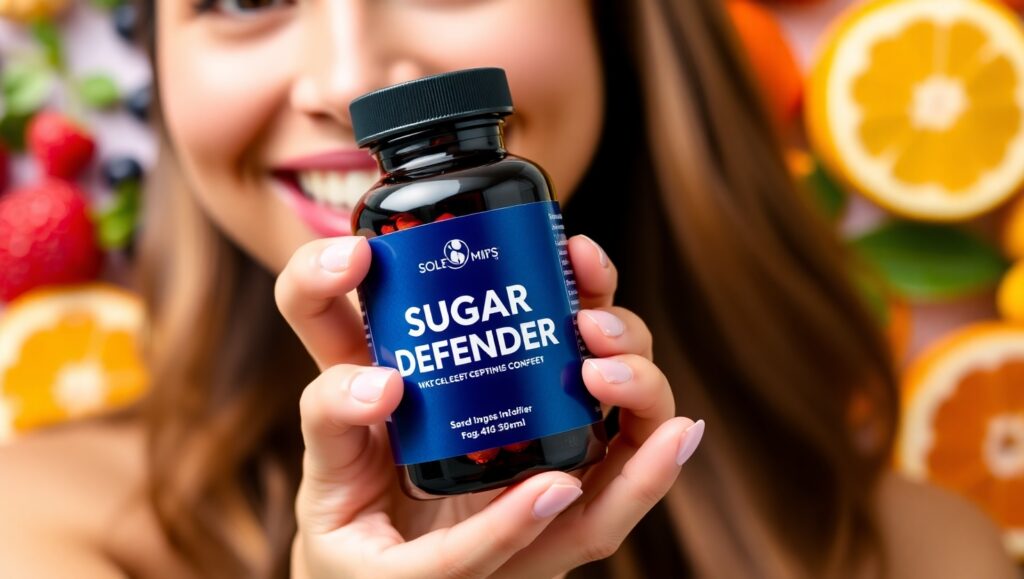What Are Sugar Defender Foods?
The Role of Sugar Defender Foods
Sugar defender foods are those that have a positive impact on blood glucose control. They are rich in fiber, protein, and healthy fats, which help slow down the absorption of sugar into the bloodstream. These foods have a low glycemic index (GI), meaning they do not cause significant spikes in blood sugar. Additionally, they can support the body’s natural ability to process sugar more efficiently, reducing the risk of developing insulin resistance and type 2 diabetes.
How Do Sugar Defender Foods Work?
The key to the effectiveness of sugar defender foods lies in their ability to stabilize insulin levels. Foods that are high in fiber, particularly soluble fiber, slow down the digestion process and reduce the rate at which sugar enters the bloodstream. Moreover, protein-rich foods can reduce hunger and cravings for sugary snacks, further promoting stable blood sugar levels.
2. The Best Sugar Defender Foods
Leafy Greens
Leafy greens such as spinach, kale, and Swiss chard are excellent sugar defender foods due to their low carbohydrate content and high fiber levels. They are also rich in magnesium, a mineral that plays a role in regulating blood sugar levels. Eating these greens regularly can help maintain steady glucose levels and provide essential nutrients without causing blood sugar spikes.
Whole Grains
Unlike refined grains, whole grains like oats, quinoa, and brown rice are packed with fiber, which helps slow sugar absorption. Their high fiber content also helps improve digestion and reduces the risk of type 2 diabetes. Whole grains have a low glycemic index and are considered beneficial for those looking to manage their blood sugar levels effectively.
Nuts and Seeds
Nuts like almonds, walnuts, and seeds such as chia and flaxseeds are rich in healthy fats, fiber, and protein. These nutrients help slow down the digestion of carbohydrates, preventing rapid blood sugar spikes. Additionally, nuts and seeds provide antioxidants that protect the body from inflammation, a common issue in those with poor blood sugar regulation.
Legumes
Beans, lentils, and chickpeas are fantastic sources of protein and fiber. Legumes are considered low-GI foods, meaning they help keep blood sugar levels steady after meals. They are also packed with essential nutrients such as iron, potassium, and magnesium, all of which are beneficial for overall health. Regularly incorporating legumes into meals can significantly reduce the risk of blood sugar imbalance.
Berries
Berries, such as strawberries, blueberries, and raspberries, are packed with antioxidants, vitamins, and fiber. They have a low glycemic index, making them an ideal fruit for managing blood sugar levels. The high fiber content in berries helps slow down the absorption of sugar, ensuring that blood sugar remains stable after consumption. Additionally, the antioxidants in berries can help reduce inflammation and protect against complications related to high blood sugar.
3. The Importance of Protein in Sugar Regulation
How Protein Helps Control Blood Sugar
Protein plays an essential role in balancing blood sugar levels. When you consume protein with carbohydrates, it slows down the digestion process, leading to a more gradual increase in blood sugar. This helps prevent insulin spikes and keeps energy levels consistent. Good sources of protein include lean meats, fish, eggs, tofu, and legumes.
Best Protein-Rich Sugar Defender Foods
Some of the best protein-rich foods for blood sugar regulation include chicken, turkey, salmon, eggs, and plant-based options like tempeh and lentils. Including these protein sources in meals can provide lasting satiety and help reduce the risk of insulin resistance.

4. The Role of Healthy Fats in Blood Sugar Balance
How Healthy Fats Improve Insulin Sensitivity
Incorporating healthy fats into your diet, such as those found in avocados, olive oil, and fatty fish, can improve insulin sensitivity and help the body regulate blood sugar levels more effectively. These fats help slow down digestion, leading to more stable glucose levels. They also have anti-inflammatory properties, which is important for people managing chronic blood sugar conditions.
Healthy Fat Foods to Include in Your Diet
Good sources of healthy fats include avocados, olive oil, coconut oil, fatty fish (like salmon and mackerel), and nuts. Including these fats in meals can contribute to overall well-being and improve blood sugar regulation over time.
5. How to Incorporate Sugar Defender Foods Into Your Diet
Easy Ways to Add Sugar Defender Foods
Incorporating sugar defender foods into your diet is simple and can be done in various ways. You can start by replacing processed snacks with a handful of nuts or a small serving of berries. Add leafy greens to smoothies, sandwiches, or salads, and opt for whole grains instead of refined options. By making small changes, you can enjoy better blood sugar management without drastically altering your eating habits.

Meal Planning for Blood Sugar Control
Meal planning can be a great way to ensure you include sugar defender foods in your daily diet. For breakfast, try oatmeal with chia seeds and berries. For lunch, prepare a salad with leafy greens, quinoa, and grilled chicken or tofu. For dinner, opt for a hearty legume stew or a piece of grilled salmon with roasted vegetables. Consistently choosing sugar-friendly foods will help you maintain stable blood sugar levels throughout the day.
